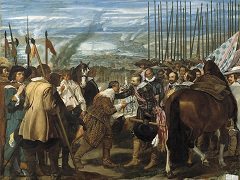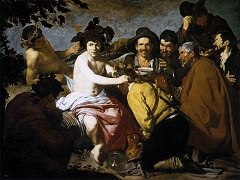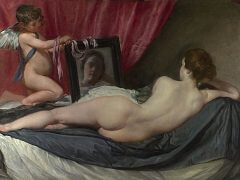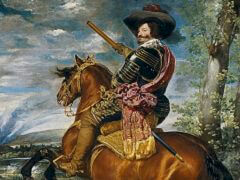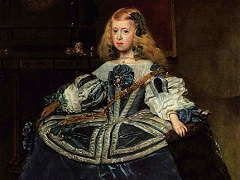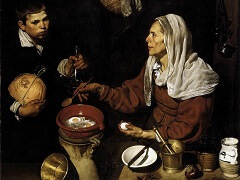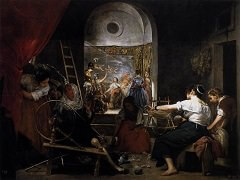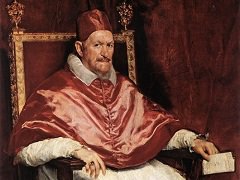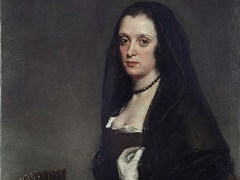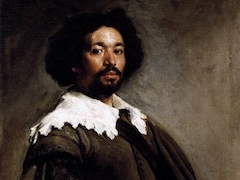The Needlewoman, 1643 by Diego Velázquez
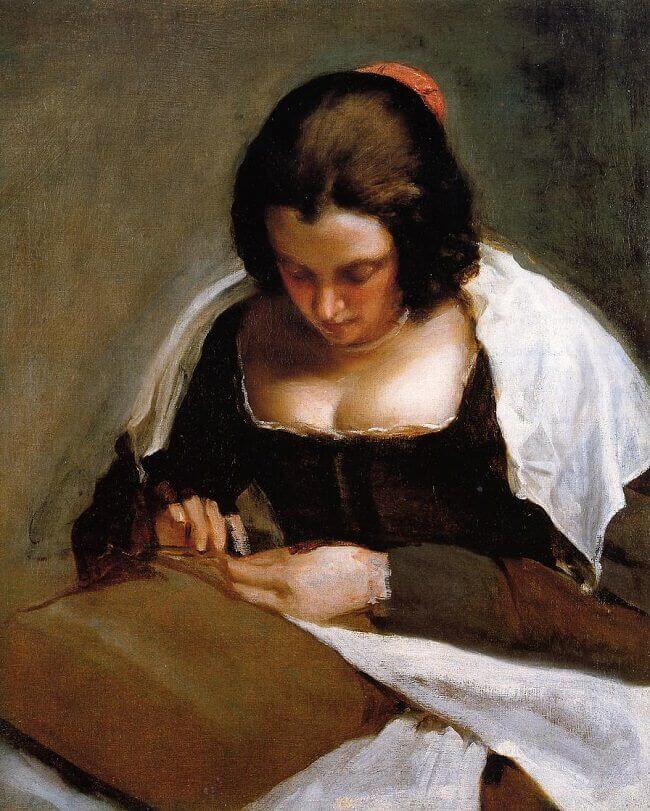
For thirty-eight years Velázquez was primarily occupied with portraits of the royal family and its entourage, but he did paint other subjects, such as this one, apparently for his own pleasure. Dutch pictures of women involved in their needlework celebrated industriousness and virtue, but there is no indication of Velázquez' intention here. Perhaps the woman was a member of his household, but that, too, cannot be determined.
This painting, which was in Velázquez' studio at the time of his death, remains unfinished, allowing an unusual look at his working method. He began with a warm gray-brown ground. (The pillow c onsists solely of this foundation layer.) Using black paint he then sketched the outlines of his design with quick strokes, which are clearly visible on the left-hand side of the picture. In some areas -- the white shawl, for example -- the texture of the canvas itself helps to model shadow. This is a common element of Velázquez' paintings, as are the rapid flickers of white that enliven the dress bodice. Only the woman's face is complete. There, thinly applied translucent glazes give the impression of soft light striking her face. Velázquez' fluid, painterly style was influenced by the works of Venetian artists, especially Titian. He traveled twice to Italy, but he could also see Titian's pictures in the palace in Madrid -- one of Titian's most committed patrons had been the Spanish king Philip II.

